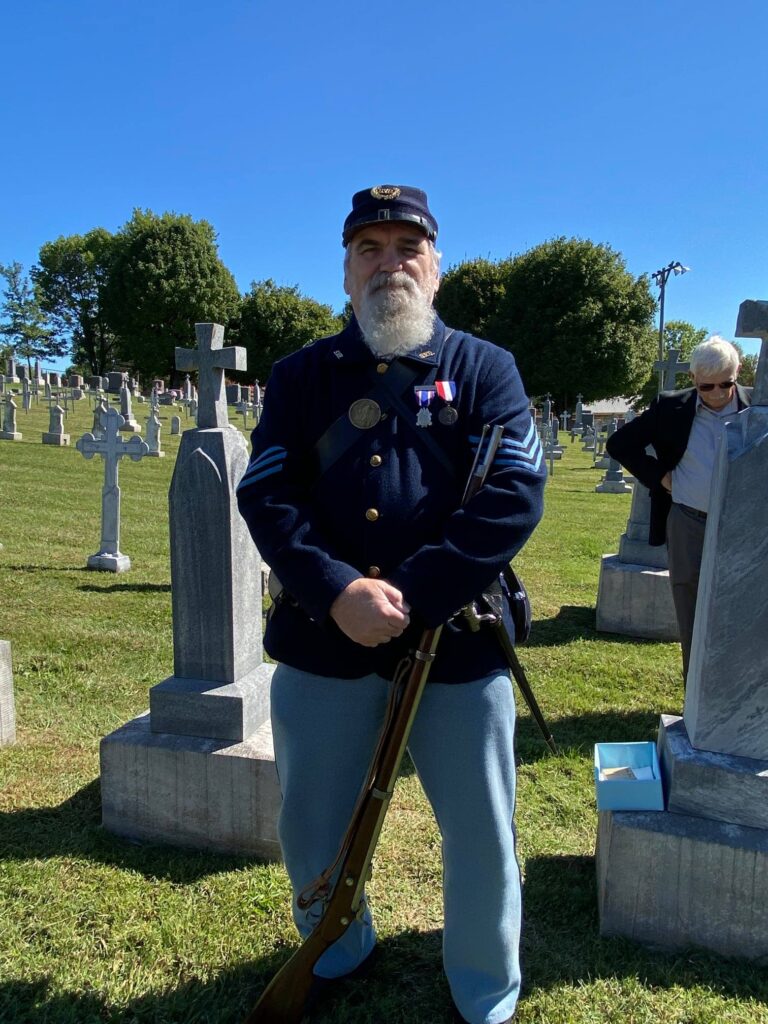Preserving Oak Hill’s Civil War Legacy

During the Civil War, hundreds of Union soldiers and sailors came through Evansville’s hospitals. Many never returned home. Their final resting place is Section 24 of Oak Hill Cemetery, where 584 men lie in honored repose.
In 1882, the Grand Army of the Republic’s Farragut Post No. 27 procured two field cannons to stand sentinel over the section. Later, in 1899, two siege cannons, two mortars, and stacks of eight-inch cannonballs were added. The graves were enclosed with an ornate cannon-post and chain fence. These additions transformed Section 24 into a solemn tribute, a reminder that the sacrifices of those who fought for the Union would not be forgotten.
The Challenge of Preservation
Since their placement in 1882, the two field guns have endured the weathering of time. Wooden carriages, never intended to last decades outdoors, have required replacement roughly every seven to ten years. Since 1986, members of John W. Foster Camp No. 2 have shouldered the task of restoring the carriages to keep them standing in dignity.
But constant repair is no longer enough. To preserve these artifacts for generations to come, the Camp has launched a major restoration project to replace the wooden carriages with lasting metal ones.
A Modern Solution
The project, estimated at $25,000—far less than the $40,000 quoted for new ductile iron carriages—has been entrusted to the University of Southern Indiana’s Applied Engineering Department and Clarksville Foundry in Tennessee.
First Carriage: Constructed of ductile iron, expected to be completed this fall.
Second Carriage: A more complex steel design with original cannon hardware and ductile iron wheels, scheduled for next spring.
Both will be specially coated to withstand the elements. Each will rest on iron supports anchored to concrete bases, preventing the wheels from sinking into the soil and ensuring long-term preservation.
Supporting the Project
Since launching the project last year, the John W. Foster Camp has raised nearly $23,000 toward the $25,000 goal. Alongside the cannon restoration, the Camp is committed to straightening and cleaning all 584 military headstones in Section 24, using D/2 solution to ensure their preservation.
This work honors not only the soldiers and sailors buried at Oak Hill but also the enduring legacy of the Union cause.







































